Malek National Library and Museum | Art and Culture
Malek Museum and Library is the largest cultural museum in Iran and the first private museum in Iran.
It houses a diverse range of items that span various eras, including manuscripts, captivating watercolor paintings, intricate calligraphy, and exquisite decorative arts. Notably, the museum boasts an exceptional assortment of lacquerware boxes adorned with intricate miniature paintings by renowned 19th-century masters of the art of the miniature, such as Mohammad Zaman and Abu Taleb Modaresi.
It was established in 1937 by Hussein Malek and was originally housed in Malek's residence, but it soon outgrew its space and was moved to Tehran's National Garden in 1944. Today, the Malek National Library and Museum stands proudly in the historic Bagh-e Melli( National Garden) precinct, boasting a unique location in the cultural-historical center of Tehran. Join us to discover the history and collections in this museum and explore its features, location, how to get there, entrance fee, visiting hours, and the best time to visit.
History of Malek Museum and Library
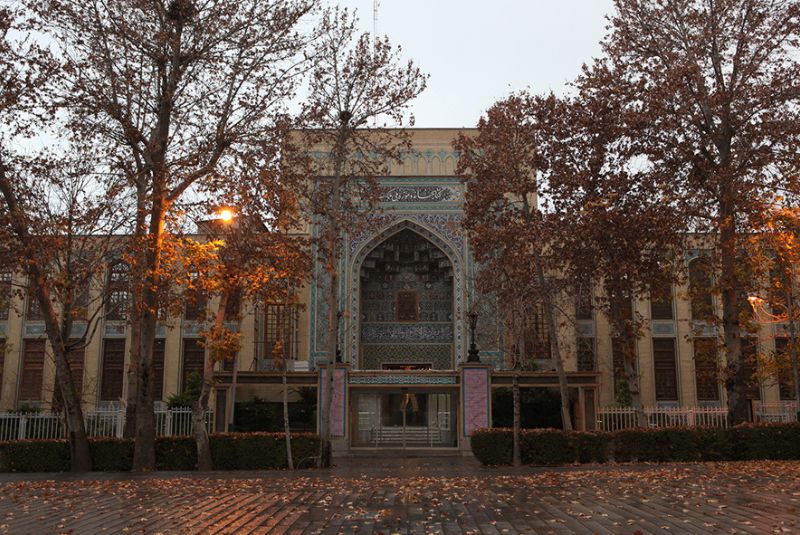
The Malek National Library and Museum is a private museum founded by Haj Hussein Aqa Malek, the eldest son of Hajj Mohammad Kazem Malek al-Tajar.
Following the passing of his father, Haj Mohammad Kazem Malek-ol-Tojjar, Haj Hossein inherited a substantial fortune, including properties and gardens in Tehran and Khorasan Province.
During a trip to Mashhad, where he managed his family's assets, Haj Hossein encountered various Iranian-Islamic artworks, including a remarkable manuscript. This encounter ignited his passion for establishing a grand library and museum, a dream that would come to fruition in the years to come.
In 1908, he laid the foundation for his vision by establishing a significant library in Mashhad, housing a remarkable collection of ancient manuscripts and printed books. Recognizing the importance of accessibility to knowledge, he later relocated the library to his historic residence in the Tehran Grand Bazaar area, opening its doors to scholars free of charge.
As Haj Malek continued to amass manuscripts, he also acquired a valuable collection of historical artworks, laying the foundation for the first private museum in Iran's history. In 1937, he generously donated his priceless library and museum to Astan-e Qods-e Razavi, the country's foremost religious and cultural institution. His intention was for the public to visit and utilize these treasures during and after his lifetime.
In 1964, Aga Malek envisioned the expansion of the library and museum. He aimed to gather a collection of valuable artistic and historical objects, allowing foreign researchers and scholars to experience Iranian art and civilization intimately. His ambition was grand, as he often stated that he aspired to create a museum on par with the British Museum.
With that vision in mind, he acquired a spacious plot of land in Tehran's National Garden for this purpose. However, the construction of the new building did not commence until after his passing. In 1985, Astan Quds Razavi began designing and constructing the new building, which was completed a few years later.
After 11 years, in 1996, the Malek Museum and Library were relocated from Malek's residence to their present location on Imam Khomeini Street in Tehran. Since then, it has showcased diverse collections, including coins, artworks, lacquer art, stamps, carpets, and calligraphy, offering a unique opportunity to its visitors.
| Discover: Best Museums in Tehran
Malek National Library and Museum Collections
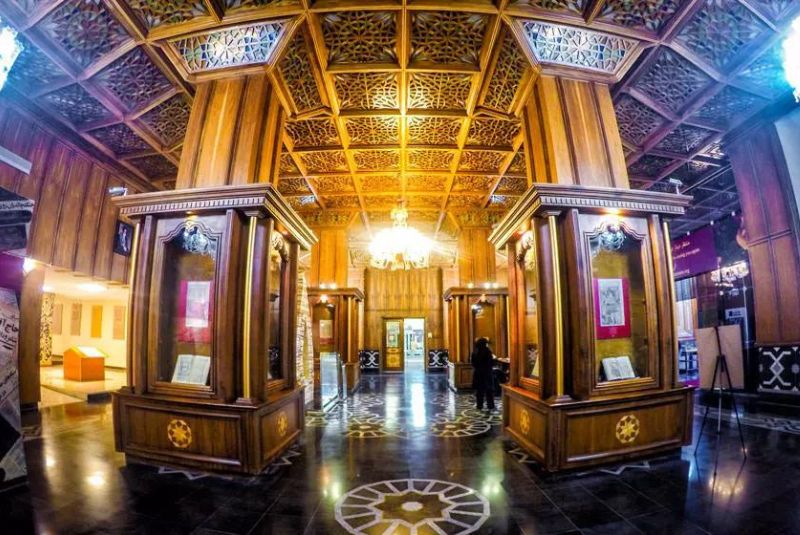
The Malek National Library and Museum has seven collections, each housing unique and captivating collections. Below are the various collections in the Malek National Museum and Library.
1. Coin Collection:
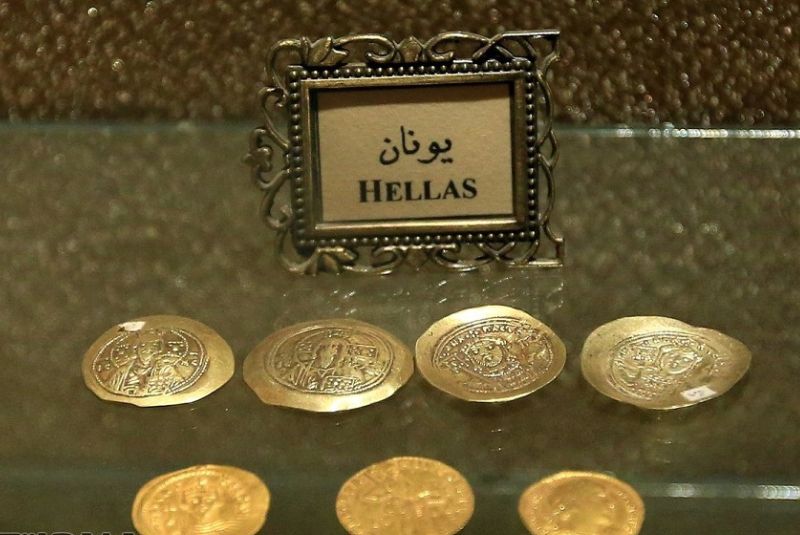
Located on the right side of the museum's lobby, this collection showcases over 10,000 coins spanning from the Lydia period to the reign of Pahlavi II. It features Iranian medals dating back to the 6th century BC, as well as coins from Greece, the successors of Alexander, the Byzantine Empire, Islamic Caliphs, and the Ottoman Kingdom.
2. Artwork Collection:
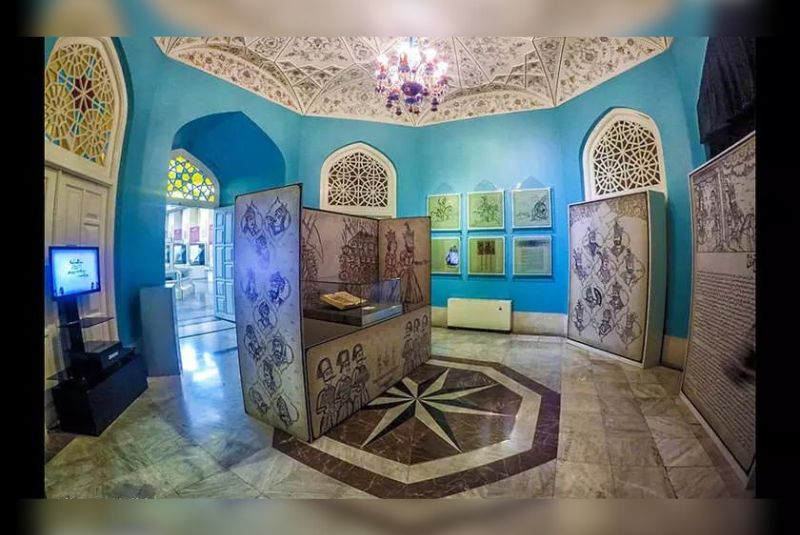
Visitors can admire Malek National Library and museum artworks and exceptional paintings by renowned Iranian artists such as Kamal-ol-Molk Ghaffari, Lotfali Sorigar, Hadi Khan Tajvidi, and European painters in the western part of the lobby. The collection also includes furniture and chandeliers, adding to the artistic ambiance.
3. Lacquer Art Collection:
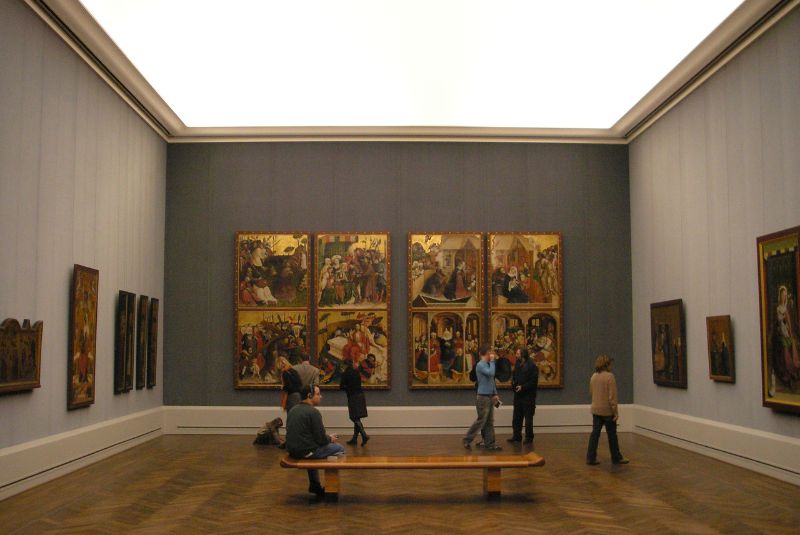
This captivating collection displays 86 exquisite pieces adorned with lacquer paintings. Visitors can marvel at beautifully decorated pen cases, frames, mirrors, and sticky heads, some of which date back nearly three centuries.
4. Stamp Collection:
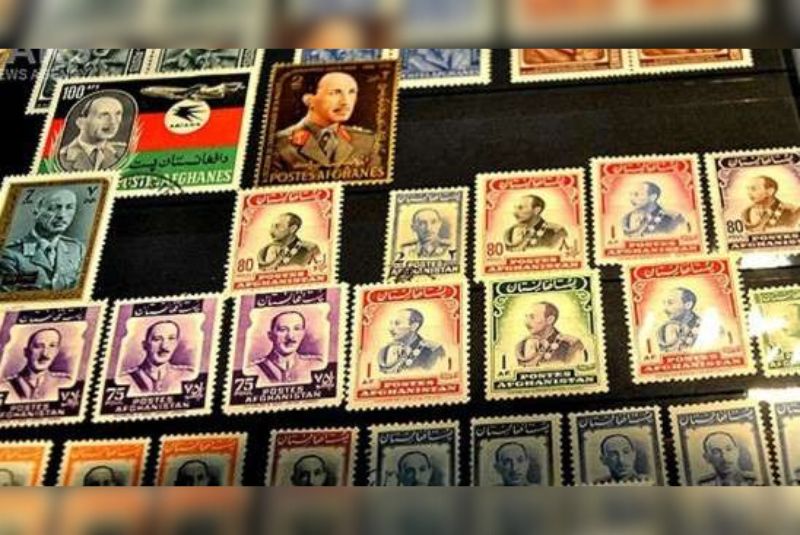
On the ground floor, the stamp collection boasts an impressive display of 100,000 stamp pieces, ranging from the earliest stamps printed in Iran and around the world to modern-day stamps. Notable highlights include rare stamps such as Victor Emmanuel's stamp of the Italian kings, which holds significance as it is said to be nonexistent in Italy.
5. Carpet Collection:
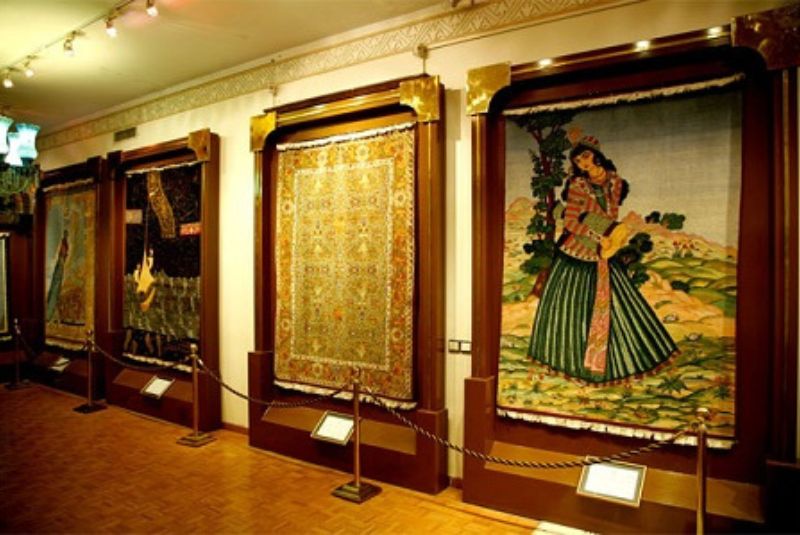
Located on the ground floor, the carpet collection features over 44 carpets and rugs. These remarkable works of art, woven by skilled craftsmen over the past two centuries, represent various regions of Iran. Noteworthy among them is a silk rug from Sanandaj, with a history spanning more than 160 years.
| Read more: Persian Carpet
6. Banu Malek Collection:
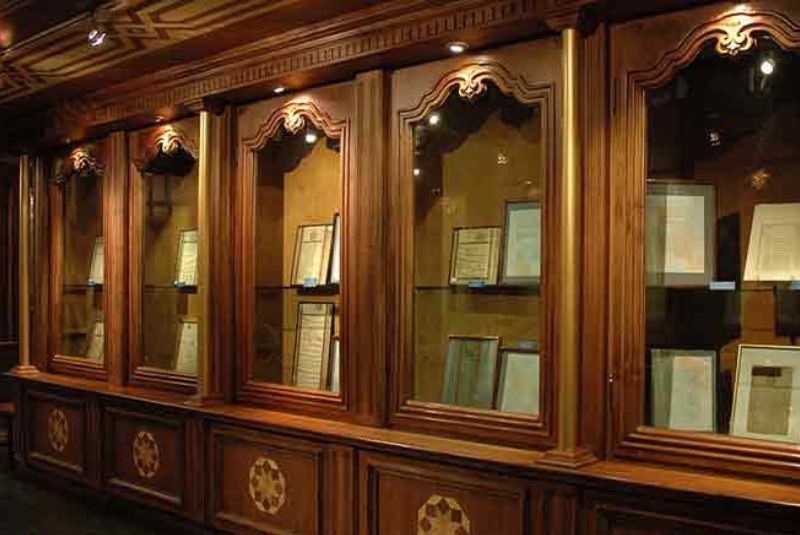
This collection, donated by Banu 'Izzatolmolk Malek, the daughter of Haj Hossein Malek, encompasses valuable works from the Qajar era. It includes paintings, manuscripts, sargholian (a type of decorative object), Qalamdan (pen cases), and lacquer works.
| Related: Persian Miniature
7. Calligraphy Collection:
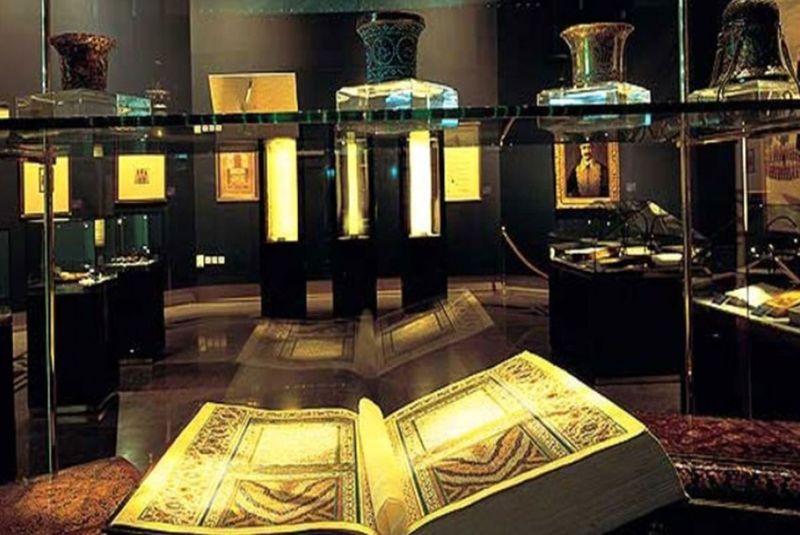
A true highlight of the museum is the calligraphy collection, which showcases the works of renowned Iranian calligraphers and Islamic artists. Visitors can admire masterpieces by artists such as Yaghoot Mostaesami, Alireza Abbasi, Mir'Emad, Ahmad Nayerizi, Darvish Abdolmajid Taleghani, and Mirza Gholamreza Esfahani.
Malek National Library
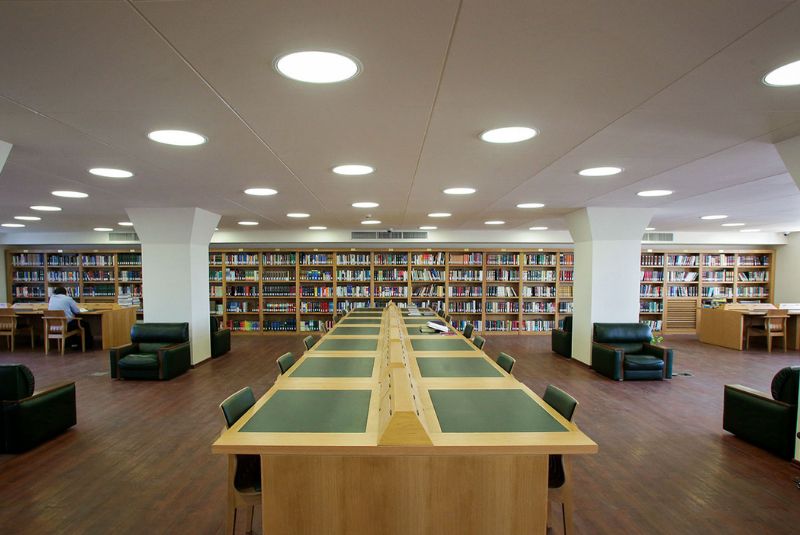
The Malek National Library is renowned as one of Iran's most valuable and extensive libraries. It boasts a collection of 19,000 manuscripts and is considered one of the six great manuscript treasures in the country. This collection includes 1,600 titles and 3,540 volumes of lithographs, some of which are beautifully illustrated. Notable examples include "Toofan al-Beka," a pictorial book depicting various events, including those of Karbala, in a vivid and tangible manner.
Within the library's Persian and Arabic books collection, there are approximately 45,300 titles housed in 90,200 volumes. This collection features exquisite and rare works such as the 1694 edition of "The Holy Qur'an," published in Hamburg, Abu Ali Sina's "Al-Qanoon fi l-Medica," published in Rome in 1593 and Tahrir of the Principles of Euclidus" by Nasir al-Din Tusi in 996 AD published in Constantinople. Additionally, books in various languages, including French, English, Russian, German, and more, can be found, focusing primarily on Iranian and Islamic studies. The library also houses an impressive collection of periodical publications, comprising over 800 titles in more than seven thousand volumes.
The National Museum of Malek's library also boasts a dedicated section for historical documents, preserving around 64,000 pages of significant documents. This collection includes decrees, administrative and court documents, legal papers, financial records, and personal correspondence. Among the treasures is a copy of the Farman (royal decree) of Mohammad Ali Shah Qajar, dating back to 1909, pertaining to his services to the constitution and the closure of the Majlis (Iranian parliament).
| Also read: Top 10 Historical Sites of Iran
Audiovisual and Audiovisual Materials:
In 2011, the Malek National Library and Museum established a section dedicated to visual and auditory materials. This collection comprises over 693 titles and 974 copies of CDs, catalogs, posters, and more, providing a rich audiovisual experience for visitors.
Malek Digital Library:
Since October 2007, the Malek Digital Library has been offering digitized versions of manuscripts, lithographs, and works in Arabic, Persian, English, French, and other languages. By the end of 2013, the library had completed digitizing all the linear works, making them accessible to enthusiasts and researchers.
Within the museum, several sections further enrich the visitor's experience:
- Workshops
- Exquisite Manuscript Library
- Hall of Scholars, Publications, and Permanent Coin Exhibition
- National Property Museum with historical objects dating back 3,000 years
- Permanent Exhibition of Painting and Writing
- Permanent Exhibition of Lacquered Works
- Permanent Exhibition of works by the Ghaffari and Kamal families, including pieces by Professor Kamal-ol-Molk
- Tak Art Exhibition
- Permanent Exhibition of donated works by Banu Ezzat Malek
- Haj Hossein Agha Malek Permanent Exhibition
- - Vaqf Rituals
Where Did the Collections Come From?
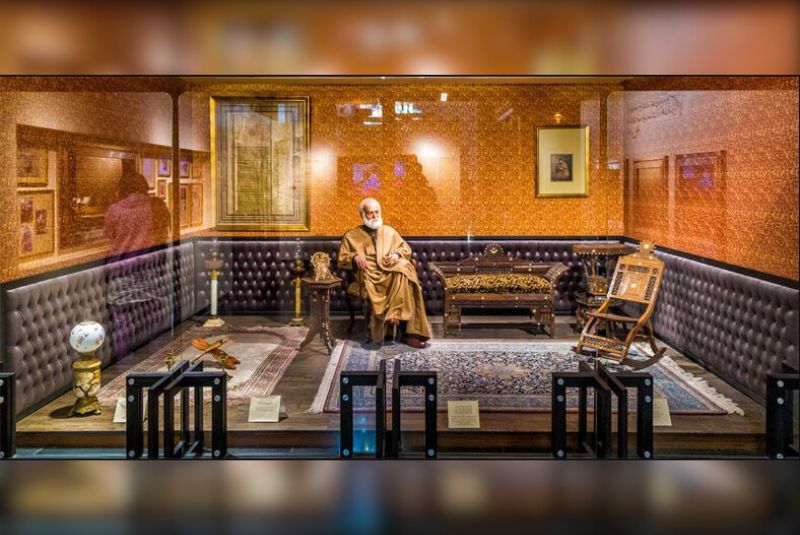
When you look at this wonderful cultural collection, you have to wonder where the museum's works come from. The collections within the Malek National Library and Museum have been sourced from various generous contributors and institutions. These include the endowment collection of Haj Hossein Aqa Malek, two collections donated by Banu Malek, the endowment collection of Dr. Ali Hojjat Zadeh, the donated collection of Ms. Iran Dastgheib, the collection of Ms. Taj ol-Moluk, the collection of Ms. Shahnia (Bahri), the donated collection of Ms. Nasrin Dastgheyb, the collection purchased from Mr. Bani Razi, the collection purchased by Mr. Dehghan Golestan, the stamp collection of the post company, the donation collection of the Ezat-ol-Moluk Soudavar Foundation, the donation collection of Mr. Mahmoud Kazemi, the donated collection of the family of physicians, the donated collection of Mir Heydar, the donated collection of the late Hossein Hosseini Zahed, and documents transferred from the Malek Library, among others. These diverse contributions have enriched the museum's holdings, creating a diverse and comprehensive cultural collection for visitors to explore and appreciate.
| Learn about: The Greatest Persian Poets throughout the History
Malek National Library and Museum Location
The Malek National Library and Museum is located in Masgh Square or Imam Khomeini Street, opposite the Ministry of Foreign Affairs building in Tehran.
Attractions Nearby Malek Library and Museum

The Malek National Library and Museum is situated in a vibrant neighborhood of Tehran, surrounded by numerous historical sites and tourist attractions. As you make your way to the museum, you will come across the impressive Portal of Bagh-e Meli (National Garden). Additionally, a short distance away lies the captivating UNESCO World Heritage Site, Golestan Palace. Other nearby attractions include the National Jewelry Museum, Moghadam Museum, Negarestan Garden, Tehran Grand Bazaar, National Museum of Iran, Glassware and Ceramic Museum, City Park, and Masoudieh Palace.
How to Get to the Malek National Library and Museum
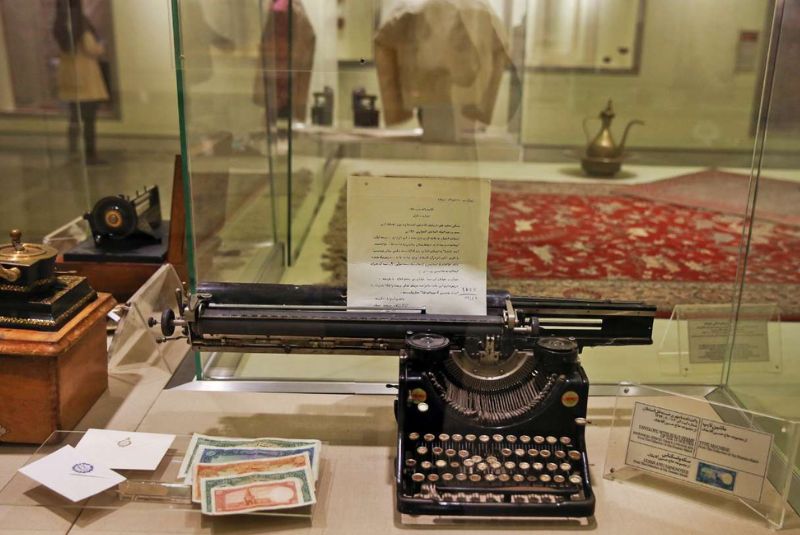
To reach the Malek National Library and Museum, you have several transportation options:
1. Metro:
The nearest metro stations are Imam Khomeini Station and Hasan Abad Station. Imam Khomeini Station can be reached via line 1 (Tajrish-Kahrizak or red line) and Hasan Abad Station via line 2 (Farhangsara-Sadeghieh or blue line). If you choose the red line, you need to reach Imam Khomeini Station and head west until you reach the National Garden gate. Enter the National Garden to reach the Malek National Library and Museum. If you opt for the second line, go to Hasan Abad Station and find your way eastward to the museum.
2. Bus:
There are numerous buses available that can take you to the museum. Buses that go to Imam Khomeini Square, Armorykhaneh, and Fayyazbakhsh terminals are suitable for reaching this location.
3. Car:
If you prefer to drive, you can take a taxi from any part of the city to Imam Khomeini Street, which is the main street in the heart of the city. From there, you can walk to the museum.
| Related: A complete Guide about Iran Public Transportation
Malek Library and Museum Opening Hours

Visiting the museum is possible on all days of the week except Fridays and public holidays, with visiting hours from 8 to 16 and Thursdays until 15 o'clock.
Malek Library and Museum Entrance Fee
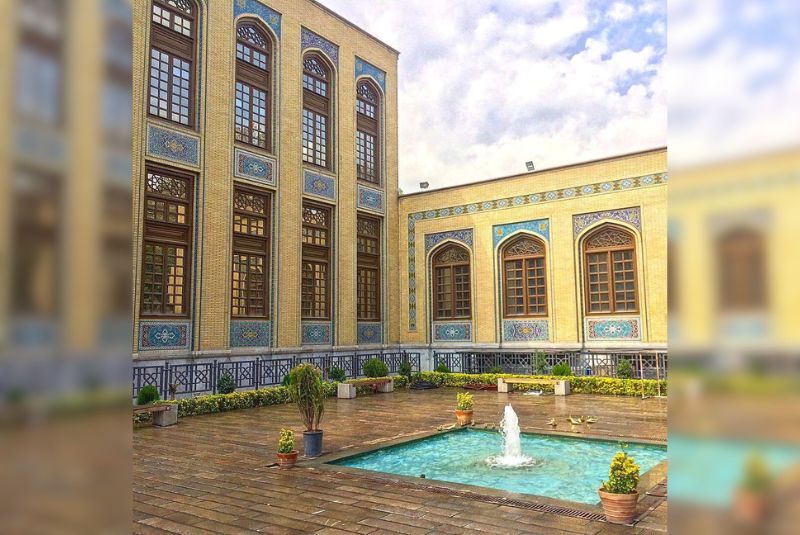
The Malek National Library and Museum is open during the above-mentioned time. The entrance fee for visitors is 5000 Tomans.
Bottom Line
Malek Museum and Library is the largest cultural museum in Iran and the first private museum in Iran founded by Haj Hussein Aqa Malek. It was established in 1937 and was originally housed in Malek's residence. The Malek National Library and Museum stands proudly in the Tehran National Garden today.
With its diverse collections, including coins, artworks, lacquer art, stamps, carpets, and calligraphy, the museum offers a unique opportunity to explore and appreciate Iran's history and the world at large. So, plan your visit today and discover the beauty and significance of these treasures firsthand.
Share your story!
Comment below and let us know about your Experience.
Your story inspires others!


Comment
Leave a Comment